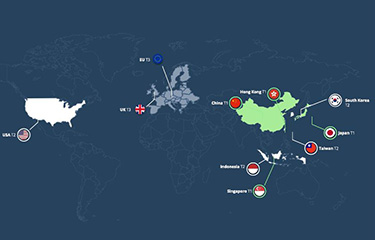Seafood Industry Australia, a trade group representing Australia’s seafood sector, has unveiled its strategy for growing its exports to AUD 2 billion (USD 1.3 billion, EUR 1.3 billion) by 2030.
In its newly released Export Market Strategic Plan, SIA mapped out a strategy to carry its exports beyond the AUD 1.2 billion (USD 768 million, EUR 783 million) total the industry reached in 2021 and the all-time high of AUD 1.5 billion (USD 959 million, EUR 978 million) achieved in 2019.
The five pillars of the strategy include strengthening collaboration between industry and government, better sharing of data and information to help exporters identify and capture trade opportunities, augmenting the industry’s export capacity, a push to increase the number and capability of Australian seafood exporters, and an effort to raise the profile of the Australian seafood brand globally.
“The landscape for Australian seafood exports has changed considerably over the past two years, ranging from the impacts of COVID-19 on supply chains to the effects of China’s ban on imported Australian seafood through non-tariff measures on the international trade environment, and the need to diversify away from a single-market reliance,” SIA Chair Clayton Nelson said. “To tackle these challenges, our seafood producers committed to the development of the first whole-of-industry Export Market Strategic Plan, supported by the Australian government.”
The report recommended Australia deepen its trading ties “to countries where Australia possesses strong, stable political ties,” such as the U.K., the U.S., and the European Union, or where “there is a familiarity with Australian products and seafood already,” such as South Korea, Japan, the U.A.E., and countries in Southeast Asia. The report names the U.S. as a more-attractive market than the E.U. and U.K due to its relative proximity to Australia and the “onerous barriers to entry” found in the E.U. and U.K. The report warned against Australian exporters falling back into their previous overreliance on China as their primary market.
"The fluctuating circumstances around exporting to China have also incurred negative reputational impact with potential new markets,” the report found. “Exporters may divert their focus from China to new markets, only to abandon efforts as soon as the door to China opens again, preventing new opportunities and trusted relationships to grow.”
Nearly half of all Australian seafood production is exported, and Australia’s seafood exports were up 9 percent year-over-year five months into 2022. While its post-COVID exports to China were down 59 percent, it picked up significant market share in other countries, increasing its seafood exports to Hong Kong (its second-largest market) by 40 percent, the United States (its fourth-largest market) by 110 percent, Vietnam (its fifth-largest market) by 153 percent, and Taiwan (its sixth-largest market) by 222 percent. However, its seafood exports to Japan, its third-largest market, dropped by 4 percent as a result of the COVID-19 crisis.
Lobster represented the highest-value Australian seafood product exported, followed by abalone, southern bluefin tuna, salmon, and prawns. However, the total export value for each of those categories dropped as a result of trading challenges caused by the pandemic, with the exception of salmon, which doubled in value. The value of Australia’s lobster exports shrunk from AUD 753 million (USD 481.8 million, EUR 491.3 million) pre-pandemic to AUD 381 million (USD 243.8 million, EUR 248.6 million) post-pandemic.
“Trade expansion and diversification is key to Australia’s future prosperity, as outlined in the Australian government’s Trade Diversification Plan. A national effort is required to secure new markets for our exports along with a transformative domestic economic agenda, which will enable Australia to produce more world-class, innovative, and high-quality foods and services for export to the world,” Australia Minister for Trade and Tourism and Special Minister of State Don Farrell said.
The Export Market Strategic Plan is being supported by the Australia’s Department of Agriculture, Water and Environment’s Agricultural Trade and its Market Access Cooperation (ATMAC) Program, which has provided multimillion-dollar grants to SIA.
“This is the first export-focused strategic plan developed by the entire Australian seafood industry including our producers, businesses, and exporters. This plan has a focus on unity and growth, and reflects the important role our export sector plays in the Australian seafood industry, the AUD 1.4 billion contribution we make to the national economy, and future-proofing the supply of sustainable and nutritious Australian seafood to the world’s growing population,” SIA CEO Veronica Papacosta said. “The Australian seafood industry was the first and worst hit when the COVID-19 pandemic struck. Our seafood exports stopped virtually overnight, and the impacts were confounded by growing international trade tensions. We needed to pivot, and we needed to pivot fast. Crisis brought opportunity, and the Australian seafood industry united our actions in the international trade landscape to develop this plan.”
Photo courtesy of Seafood Industry Australia







